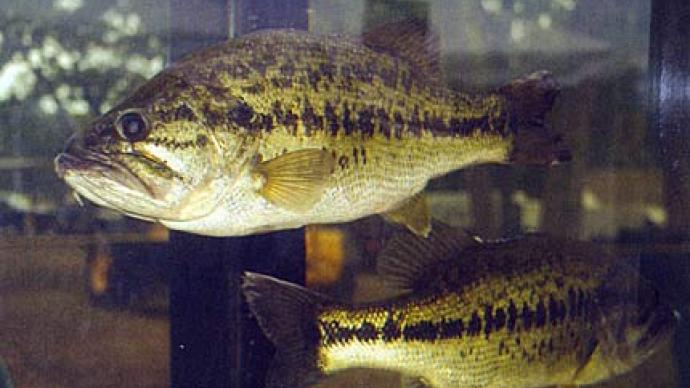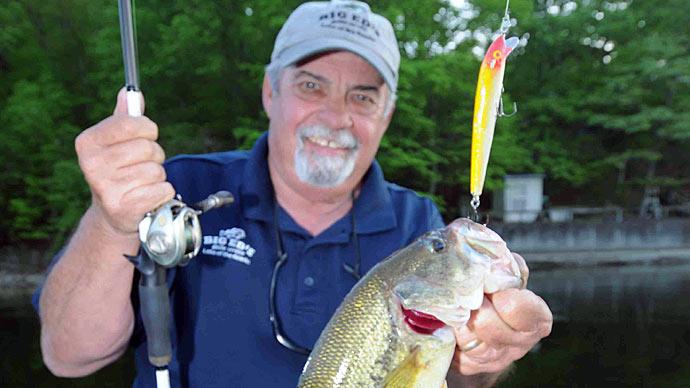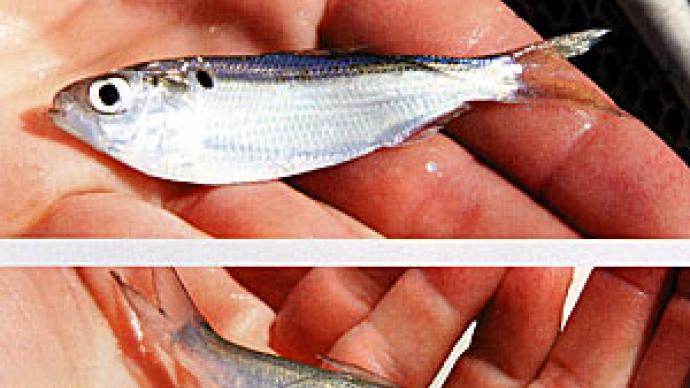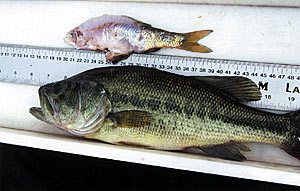
Remember those pyramid-shaped food chain graphics in your biology textbook in school? The bottom of the pyramid was fertilizer or something and the little top triangle was a silhouette of a man. Those were simple days and the food chain seemed simpler.
Your underwater food web seems simple, too. Let me complicate it for you.
Plant, plankton, yellow perch, pike. Or is it plant, grass carp? Or plant, tilapia, bass, gar? Or is it milfoil, weevil, bluegill, bass? Or is it, dead plant, midge larvae, bluegill, and largemouth bass?
The real answer is this: The food web is complicated and seldom explained by a single relationship.
What's the difference between a food web and a food chain? The food chain is a simplistic depiction of a linear feeding relationship in an ecosystem. Cartoons in textbooks and magazines start with some green plant and end at some top dawg, apex predator. The classic example in terrestrial ecology is grass, rabbit and lynx. In a pond, a similar relationship would be phytoplankton, zooplankton, golden shiner and largemouth bass. The food web is a more complicated set of food chains that overlap and are interconnected.

There is a food chain for plankton. There is a food chain for bluegill. Bluegill are part of a food chain for bass. Bass are part of a food chain for tiger musky. All these food chains combine into an underwater food web.
Ponds are our passion. But our experience with water is not an emersion experience. After all, we are terrestrial creatures. As a species and as scientists, we know more about land based food chains and webs than we do about aquatic ecosystems.
Let's compare a few differences between land and water based food webs.
With the exception of deep ocean vents and chemosynthetic organisms, the energy for all food webs starts with the sun, nutrients and a green plant. The terrestrial system is bright, oxygen rich, has vast temperature fluctuations and, as a medium for growth, air lends very little nourishment for growth (after all plants are rooted in soil). Terrestrial organisms are dominated by large, slow growing, long-lived immobile plants. These plants are relatively unproductive, with most of their carbohydrate energy tied up into structural support and a complicated vascular system. Think of an oak tree. It has lots of stored energy, which is largely unavailable in the food web, but keeps the Cornwell ranch warm all winter via firewood. Terrestrial animals also must have a similar investment in structural support or we would be a puddle.
In contrast, aquatic ecosystems are dim, poorly lit, low oxygen environments that have lower temperature extremes and very high levels of dissolved solids that can nourish aquatic life. Water is a more constant, less extreme environment than air. The dominant producers in aquatic environments are usually small, highly nutritious, protein rich phytoplankton that move around with water currents. Since they are so small and water provides buoyancy, these plants need little investment in structural support. Plankton can get nutrients they need directly from the water and have no need for a complicated transport system.
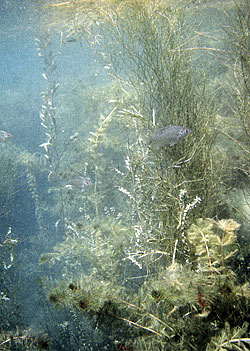
Remember that energy and biomass are lost as organisms move up each level in the food web. In terrestrial systems, much energy is lost in indigestible material like bone; lignin and cellulose (think of that fiber supplement in your own diet). The animals that eat these plants are different too. Animals on land spend a great deal of energy (especially warm blooded ones) fighting gravity and maintaining their position in the world. Aquatic systems are dominated by cold blooded animals that have to spend much less energy fighting gravity.
Aquatic systems are much more efficient at transferring energy to the next feeding level. In fact, a food web starting with phytoplankton often supports a higher biomass of zooplankton. What does that mean? A biomass of phytoplankton can support a higher biomass of zooplankton at the next feeding level. Why? Phytoplankton are very productive, have very short reproductive cycles and are exceptionally nutritious to what eats them. Essentially, phytoplankton can often produce and reproduce as fast as they are being consumed at the next level. So, the typical food "pyramid" we see so often in terrestrial systems may not be a pyramid at all in the aquatic ecosystem. The base may be smaller than the middle in some cases. This would be like a lower biomass of grass supporting a higher biomass of cows.
To further complicate things, your pond may have food webs that are based on green plants, dead plants and food webs which are based on bacteria, or even chemosynthesis. I have not devoted much space here to rooted aquatic plants. Generally, rooted plants take a back seat to phytoplankton as the main source of the green plant food web in ponds and lakes. However, their role in the detrital (dead stuff) food chain can be significant. Also, the amount of attached algae growing on the plant itself can be important to the food web as well.
So what does a typical food chain or food web based on green plants look like in your pond? Light plus nutrients plus a green plant (phytoplankton or rooted macrophyte or attached algae), then an herbivore grazer (rotifer, copepod or water flea), then a planktivorous fish (shiner or small sunfish), then a predator (bass), maybe another predator (pike, pickerel or a monster bass) lastly Pondmeister (you, if you choose).
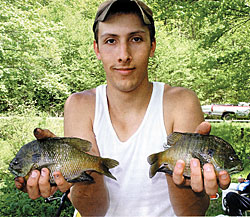
Food chains are usually longer in aquatic systems. Rarely does this linear relationship work out as nicely as planned. For example, I find hundreds of tiny fly larvae in stomachs of five pound lake trout in the lake I ice fish. Those lake trout are the apex predator in that lake. Why are they eating fly larvae when there are plenty of baitfish in that lake? I have no idea! In many cases, when small largemouth bass have eliminated forage in a lake, those bass will stunt and will take the role of planktivore and will crash a large zooplankton population, or chase dragonflies as they dip for a drink. Why? They are hungry and other stunted bass in this pond are too similar in size to eat each other. What's left? ...zooplankton.
Then we have animals which eat a variety of things in their diet, both plant and animal. Tilapia, rudd, golden shiners and a host of other fish are omnivores. Fathead minnows are my favorite in that they eat a host of things like mosquito larvae, zooplankton and in many cases, detritus (dead plants). Those little guys are tough. Too bad they are so small and swim so slow. Otherwise, they might be the perfect forage fish.
I do know there is plenty of overlap in the food web. The food web, even in a simple pond, is often not linear. Bass will eat baby bass, sunfish will eat baby bass, perch will eat baby bass, crappie will eat baby bass, bass eat baby birds and snakes and on and on. This eating out of order is not limited to fish eating other fish either. Predacious diving beetles and giant water bugs eat baby fish. Have you ever seen a fishing spider catch a small fish? I am glad those spiders don't get any bigger! My wife says I have a spider phobia.
So what does all this have to do with you? As a conscientious, thoughtful pondmeister, part of your life's mission is to manage the food chain in your pond. Fertilizer feeds plankton which feeds little bugs which feed tiny fish which feed your larger fish and so on. Don't change what you are doing if it works. But, always keep in mind that your food chain may not always be working in the direction you expect.
As you study your pond, observe, look and see what you can see. The food chain under your water is constantly adapting. Part of the fun of pond management is to watch for those adaptations. There may not be a single thing for you to do about it, but watching and learning helps understand what the pond and its inhabitants do to take advantage of any and all food web opportunities in their underwater lives.
Mark Cornwell is a fisheries professor at SUNY-Cobleskill in Cohleskill, New York. His passion is raising walleye and the I.Q. of fisheries students in the Northeast.
Reprinted with permission from Pond Boss Magazine

